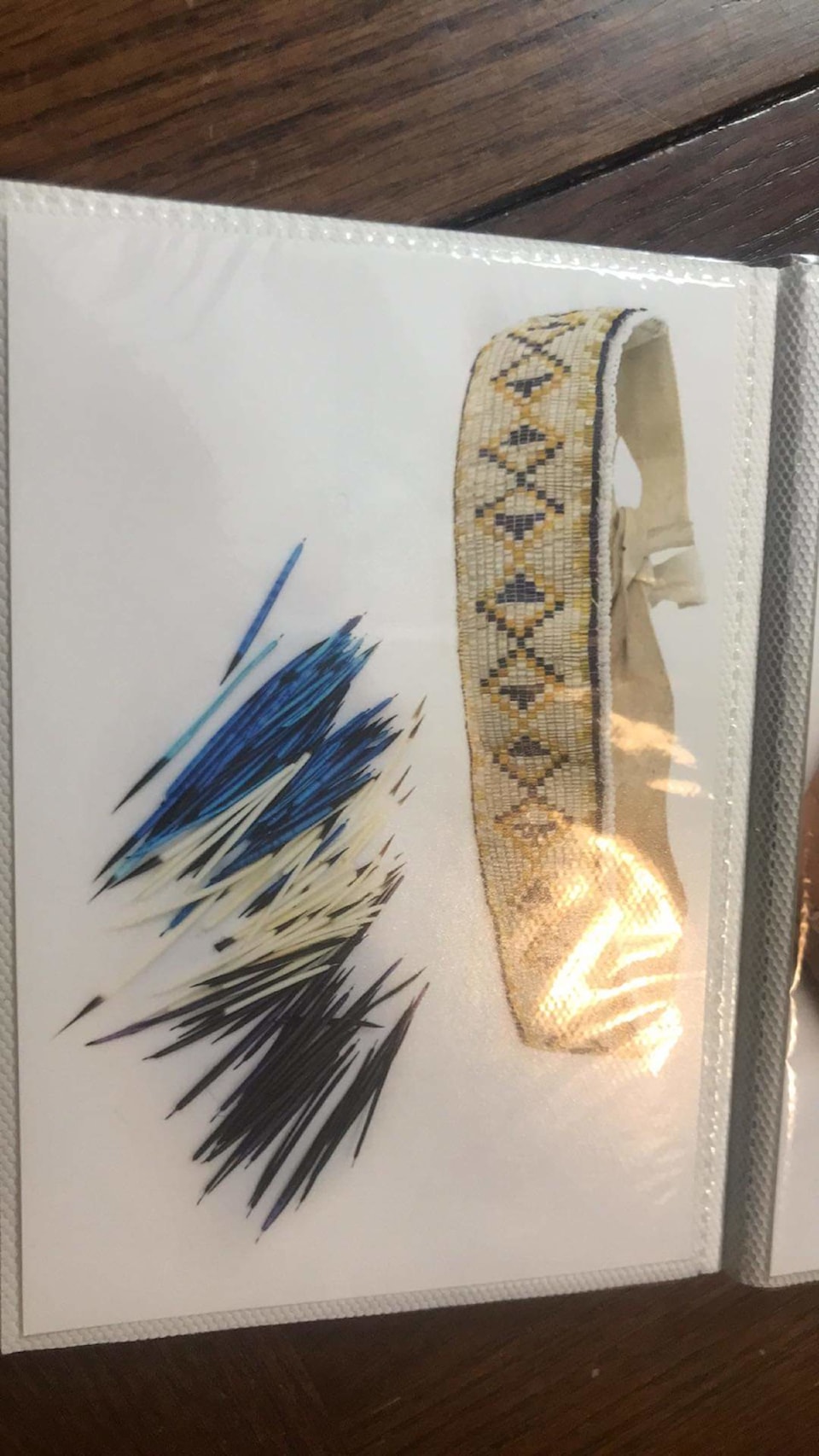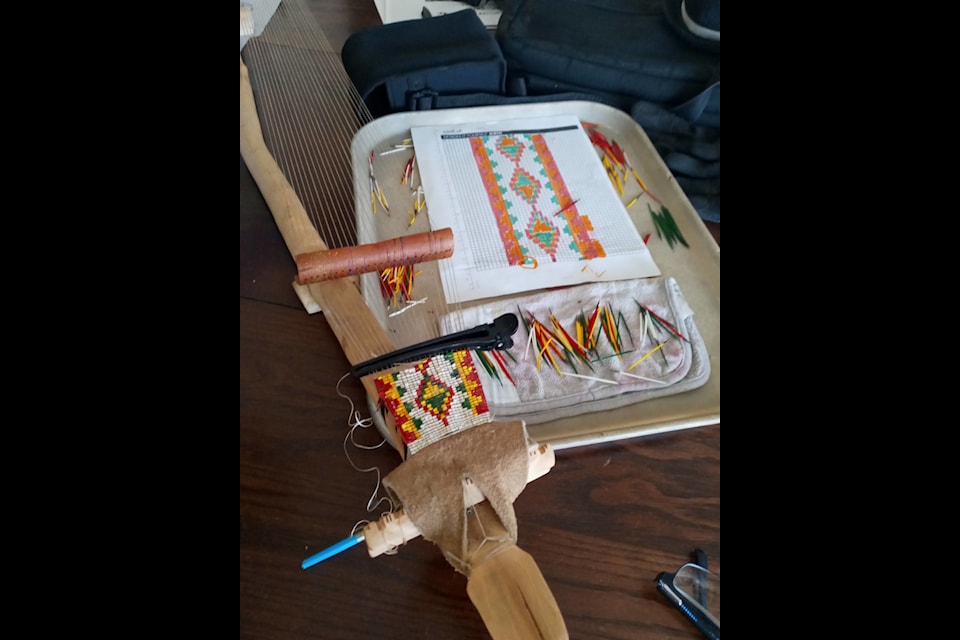Far too much of traditional culture across Turtle Island has been lost forever in the fires of colonialism and what little that remains is isolated among Elders few and far between.
People hoping to preserve their culture often don't even know what they're looking for.

Enter Arsene Betsidea of Délı̨nę, who has met this problem head on and over the last decade has pieced together the traditional Dene art of weaving porcupine quills with the help of knowing two languages and having two very knowledgeable grandparents.
"My grandmother gave me hints about porcupine quill weaving, but everything else she taught," he said. "Things like basic skills and how to do certain stuff. But for quills, she told me stories from her grandmother of how it was done. How they used to dye quills, collect them and harvest them.
"Just basic stories about how to prepare and butcher a porcupine."
Now, having put in the time, Betsidea's hard work is paying off. He recently conducted a three-day workshop at the Indigenous Fashion Arts festival in Toronto which ran from May 30 to June 2 teaching how to make bracelets out of porcupine quills.
As he explains, the process is very elaborate and requires a number of steps before you can even begin weaving the quills.
"The first belt I completed took me nearly six months," he said. "It's very meticulous in nature. The first thing I had to do was construct a loom. So you've got to harvest a willow that's a particular shape and length. A driftwood willow is flexible and very durable. So that was the first step.
"The second one is actually shaping it into a loom. You've got to peel it, work the ends well and make sure its smooth so it won't catch on loose fibres. The loom has to be strong enough.
"From the stories I heard from Elders and the museum pieces I analyzed, they would use moose tendons. They would twist the fibres and the tension has to be really right. Then you have to sew those into a hide strap — the end portion. Each strand has to be identical tension. If the tension is too loose or tight the quills won't stay in place and it will fall out if you take it off the loom.
"So that took awhile. The next stage is getting the porcupine quills ready. It depends on how many strings you're working with. I started with bracelets, then thought I could work my way into weaving a belt. That's from five strings to 28 strings. Once a design is planned out, then you have to deal with the colours and sizes of each quill. If one quill is different size than others, it's going to warp. So I had to be very careful."
Learning this near-extinct craft took a great deal of dedication and even more luck. Betsidea's grandmother is a Great Bear Dene and his grandfather is a Dogrib Dene — and both taught him their languages as well as their knowledge of crafting. Carrying two Indigenous languages on his journey gave him the ability to reach out to Elders across the North to piece together the art.
With the knowledge of the Elders, Betsidea was then able to go through museum archives of traditional art to examine actual pieces of quillwork and put together theories of how they were put together.
From there, it was a matter of practice, trial and error. A bit of improvisation and creativity helped too.
"My grandparents also told stories where actually hung the loom from tepees," he said. "Unfortunately I couldn't hang from my ceiling, so I put some stands on it.
"The hardest challenge is once it's completed. This art was basically lost a long time ago. The last artifact I could find was completed in the early 1980s. Her finished artwork was still placed on the loom with no backing on it. From the stories I've heard and from the artifacts, I figured out how to take the belt off the loom. Once you take the belt off the loom it's loose. From the artifacts I've observed, they took a strip of moose or caribou hide on the back of the porcupine quills.

"If it wasn't for me being able to speak two Indigenous languages — that really helped. Without that connection, I wouldn't have been able to connect with the Elders I interviewed. Understanding the legends and why people wore porcupine belts.
Now that he's saved the art of porcupine quill weaving from the brink, Betsidea says he's eager to share his knowledge. Having conducted the aforementioned workshop at the IFA festival as well as presentations in Whitehorse and Whati, Betsidea said he's open to any community that wants to re-learn the lost craft.
As it turned out, Betsidea said his family didn't realize the craft was disappearing until he set out to learn more about it. He said the fact he has been able to preserve this craft fills him with pride in himself and his heritage and he hopes to inspire others to do the same.
"Now I feel at ease," he said. "This was nearly lost to history. I barely revived it and it took half of my life. I like the fact that now I'm teaching this ancient skill. I want my students to continue on the teaching and pass this knowledge to other generations. Let's make sure this isn't lost again.
"When people back in the day wore this kind of belt it was a sign of wealth and good being. Now I understand why. You've got to take it one step of a time and understand each process.
"Let the spirits of our ancestors guide us into doing well to revive as much of their thousands of years of knowledge and preserve them as much as we can."
